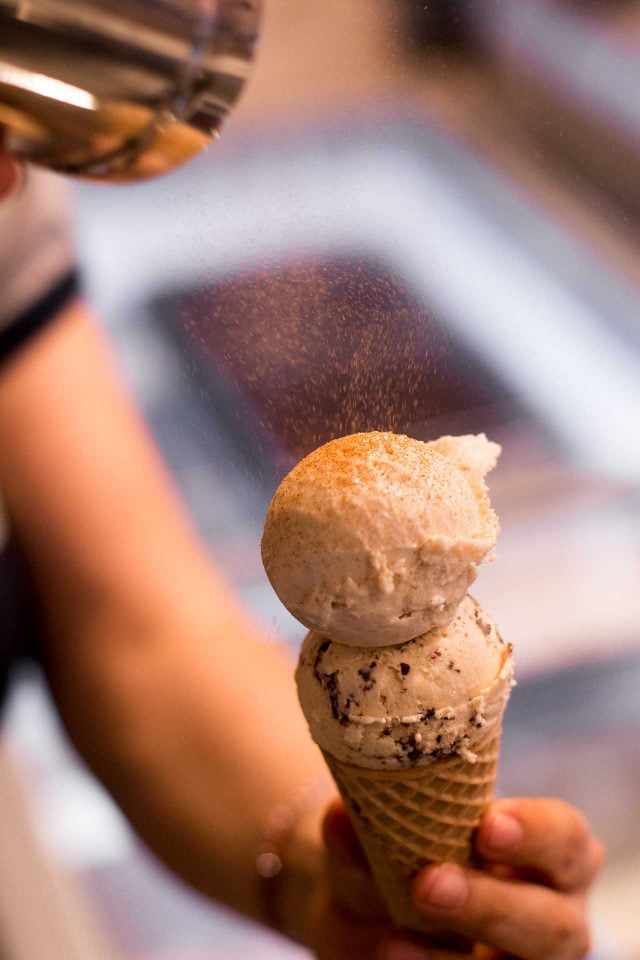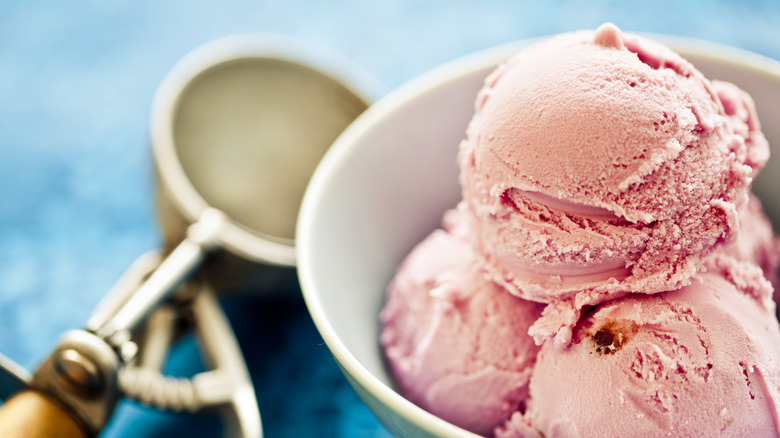Ice cream won’t freeze in the freezer due to improper temperature settings or an overstuffed freezer. Ensure the freezer is set to 0°F (-18°C).
Ice cream not freezing properly can be frustrating, especially when you crave a cold treat. Often, the issue stems from a freezer that’s too warm or packed with items, blocking proper airflow. Adjusting the temperature to 0°F (-18°C) can solve this problem.
Additionally, rearranging items to improve air circulation helps maintain a consistent temperature. Poor-quality ice cream with low-fat content may also fail to freeze well. High-fat ice cream with proper ingredients freezes more effectively. Addressing these factors ensures your ice cream remains perfectly frozen, ready to enjoy anytime.
Common Reasons
The freezer temperature may be set too high. Ice cream needs very cold temperatures. Check the thermostat settings in the freezer. Ensure the freezer is at or below 0°F (-18°C). A faulty thermostat can also cause problems. Ensure the freezer door seals properly. Warm air can leak inside if the seal is broken.
Store ice cream in the back of the freezer. This is the coldest part. Avoid placing it near the freezer door. Opening the door often lets warm air in. Keep the ice cream container tightly closed. This helps maintain a consistent temperature. Avoid overloading the freezer. Air needs to circulate freely to keep everything cold.
Optimal Freezer Settings
Set your freezer to the right temperature. The best range is 0°F to -10°F. This keeps ice cream solid and tasty. Use a thermometer to check your freezer. Adjust the settings if needed.
Use the control panel to set the temperature. Some freezers have a dial, others have buttons. Follow the manual for your model. Wait a few hours after adjusting to see results. Always keep the freezer door closed. This helps maintain a steady temperature.
Proper Storage Techniques
Ensure the ice cream container is tightly sealed. This prevents air from entering. Air causes ice crystals to form. Ice crystals make ice cream hard to freeze. Use airtight containers if possible. This keeps the texture smooth and creamy. Place a layer of plastic wrap over the ice cream. This adds extra protection from air.
Place ice cream at the back of the freezer. This is the coldest part. Avoid placing it near the door. The door area is warmer. Warm air enters each time the door opens. Store ice cream on a flat surface. Keep it away from other items. Crowded freezers can block airflow. Good airflow helps maintain a consistent temperature.
Quality Of Ingredients
The fat content in ice cream affects its freezing point. High fat content makes ice cream creamier and softer. Low fat content can make ice cream hard. Use the right amount of fat for the best texture.
Stabilizers help ice cream stay smooth. They prevent ice crystals from forming. Common stabilizers are gelatin, guar gum, and carob bean gum. Use stabilizers to keep ice cream from getting icy. They also help maintain the texture over time.
Homemade Ice Cream Tips
Sugar helps ice cream freeze. Too much sugar makes it soft. Fat from cream makes ice cream smooth. Too little fat makes it icy. Stabilizers like eggs or gelatin help with texture. Too many stabilizers make it gummy. Air gets added while churning. Too much air makes it fluffy, not creamy.
Pre-chilling the mixtures is very important. It makes the ice cream freeze faster. Use a cold bowl for mixing. Put the mixture in the fridge for a few hours. This helps the ice cream freeze better in the freezer.
Credit: www.quora.com
Store-bought Ice Cream Issues
Always use an insulated bag for ice cream. This keeps it cold. Buy ice cream last during shopping. It should be the final item in your cart. Avoid long trips home. The ice cream can melt. This affects its quality. Place ice cream in the coldest part of your car. Usually, this is the back seat. Never leave ice cream in the car too long.
Check for ice crystals on the ice cream. This shows it has melted before. Look at the texture. Ice cream should be smooth. If it is grainy, it has melted and refrozen. Notice any unusual colors. Discoloration means poor quality. Smell the ice cream. It should have a sweet scent. A sour smell means it is bad.
Maintaining Freezer Health
Regular defrosting helps your freezer work well. Ice buildup can block cold air. Defrost every 6 months or as needed. Turn off the freezer first. Remove all food items. Allow ice to melt naturally. Use warm water to speed up melting. Dry the inside completely before turning it back on.
Clean your freezer every few months. Remove food items first. Use a mild cleaner and warm water. Wipe down shelves and walls. Check seals on the door. Make sure they are tight and clean. Replace damaged seals to keep cold air inside. Vacuum the coils at the back of the freezer. This helps it work better.

Credit: www.davidlebovitz.com
Alternative Solutions
Dry ice can help freeze your ice cream. Place the dry ice in a cooler. Add a layer of newspaper on top. Then, put your ice cream container inside. Make sure the cooler is sealed. This method can quickly freeze your ice cream. Be careful while handling dry ice. Always use gloves to avoid burns.
An ice cream maker can be a great investment. It ensures your ice cream freezes properly. Most ice cream makers have a built-in freezer. This helps in consistent freezing. Follow the instructions for best results. Homemade ice cream can be fun to make. You can try different flavors too.

Credit: www.foodrepublic.com
Frequently Asked Questions
Why Is The Freezer Not Freezing Ice Cream?
The freezer might not be cold enough. Check the temperature setting. Ensure the door seals properly. Overloading can also affect freezing.
How Do You Fix Ice Cream That Won’t Freeze?
To fix ice cream that won’t freeze, ensure correct ingredient ratios. Use full-fat dairy and avoid too much sugar. Chill the mixture before churning. Make sure your freezer is set to the right temperature.
Why Is My Freezer Cold But Not Freezing Ice?
Your freezer might have a faulty thermostat, clogged vents, or insufficient refrigerant. Check for these issues and ensure proper airflow.
Why Is My Ice Cream Frozen Solid?
Ice cream can freeze solid if your freezer is too cold. Adjust the temperature to -18°C (0°F) for ideal consistency. Ensure the ice cream is stored in the back, away from the freezer door.
Conclusion
Ensuring your ice cream freezes properly involves checking your freezer settings and storage methods. Regular maintenance can prevent issues. Use airtight containers and avoid overloading your freezer. By following these tips, you can enjoy perfectly frozen ice cream every time.
Remember, a little care goes a long way in preserving your treats.
